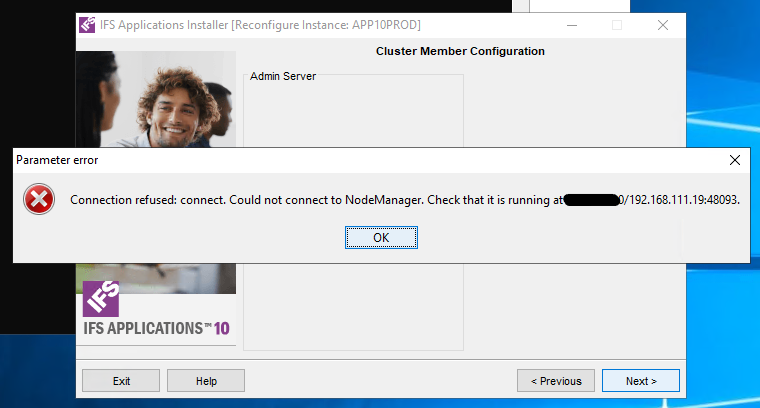Hi Community,
After a fresh installation of IFS 10 I start to install UPD 17. While instilling i got below error on installation window.
IFS_HOME\repository\server\install_fndmws.xml:265: Failed to configure Middleware Server. Error is: Error when creating IFS Middleware Domain.
null
@org.python.core.Py.JavaError(Py.java:368)
Configuring IFS PSO Integration 1.0
Configuring Documentation
after the installation completed with errors then canst start the environment also can't run re-configuration.

Even when i start the node manager service still can't run re-configuration.
Best answer by Rusiiiru
View original



